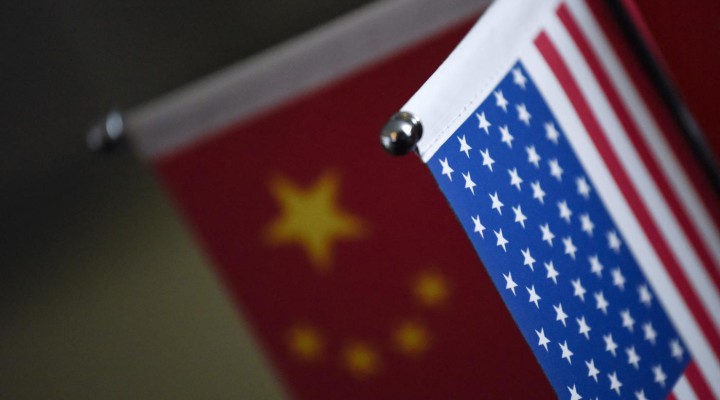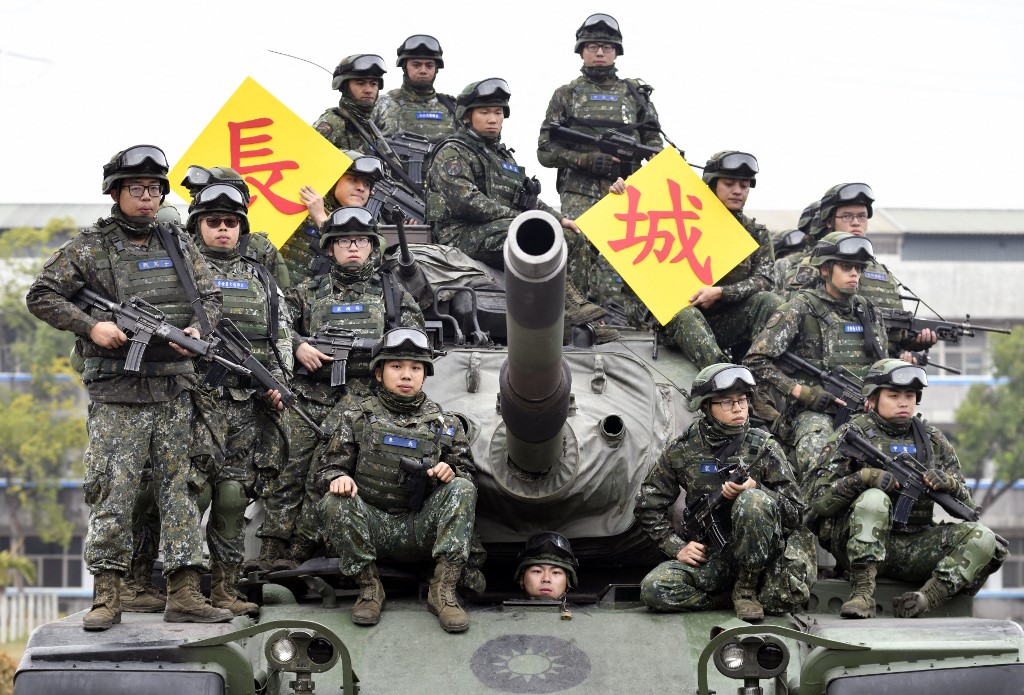US-China: How to step back from the brink of conflict

The US thought China would change its political system as it embraced capitalism. It didn’t, and became the world’s second-largest economy
The dynamic between the Global West and the Global Rest is likely to be one of the main geopolitical drivers of the coming decades – and the competition between the US and China will be its cornerstone.
This renewed confrontation is effectively reshaping what is known as the rules-based world order.
In less than a decade, the US went from strong engagement with China to open competition. Trade disputes, Covid-19, China’s successes and its assertiveness deepened the antagonism between the two countries. Now they both view their relationship through the prism of national security.
Figuring out what is behind the new US perception of China is easy. American foreign policy debate is open and transparent, although not always empirically based. The US foreign policy establishment, at a bipartisan level, and the new US National Security Strategy see China as harbouring “the intention and, increasingly, the capacity to reshape the international order in favour of one that tilts the global playing field to its benefit”.
Making sense of China’s view is not easy at all. The Beijing leadership debates issues opaquely. Its parliament does not conduct public hearings and the Chinese press corps is not a model of independent journalism.
What is known about the Chinese decision-making process is fragmentary; usually it is acquired with considerable delay thanks to rare leaks or through historians’ and sinologists’ meticulous work. Understanding of Beijing’s decision-making is primarily based on its leadership’s public statements and actions.
It appears China’s leaders hold the firm belief that US policy aims to “preserve… a so-called international order designed to serve the US’s own interests and perpetuate its hegemony”.
Zero-sum game mentality
It is a relationship that also appears trapped between the classic security dilemma and a mirrored zero-sum game approach.
The first is a condition where actions taken by a state to increase its own security cause reactions from other states, which in turn lead to a decrease rather than an increase in the original state’s security. For example, if China reinforces its military capability because of its improved technologies, the US reaction may trigger an increased sense of insecurity in Beijing and so on.
The zero-sum game mentality likewise restricts the areas where two countries could cooperate to ease their tensions. US-China’s political, economic, trade, financial and technological relations are increasingly framed in such a matrix. Only climate change has, for now, escaped such logic.
Both political establishments are also afraid to be perceived as soft by the other. The result is a sort of “echo chamber that encourages analysts, bureaucrats and officials to be politically correct rather than analytically correct”. And the ultimate consequence is groupthink – a serious obstacle for two global powers struggling to avoid the deterioration of their relationship.
In an ideology-driven, tightly closed authoritarian system like the Chinese one, groupthink is the norm, less so in the traditionally open American one.
Taiwan has become the epicentre of US-China tensions. In the last half-century, the status of the island has been dealt with through a consensual constructive ambiguity built upon three joint statements which, since the early 1970s, gave birth to the so-called one-China policy. Today, such a policy is questioned. Taiwan risks becoming to Asia what Ukraine is now to Europe.
The one-China policy was the result of the then power imbalances between the US and China, but also of the different priorities and expectations on both sides.
Chinese leadership privileged its modernisation and opening to the world. The Americans expected that by embracing capitalism, China would end up changing its political system. The last decade has instead shown that the long engagement between the two countries has not arrived at a formal alliance; instead mutual resentment and recriminations, typical of a long love story that ended badly, followed.
In just one generation, China has become the world’s second-largest economy and a top military and technological player; above all, it has never considered changing its political system according to US expectations. After all, it is hard for a 2,500-year-old civilisation to accept lectures on how to rule itself from a barely 250-year-old nation.
Reciprocal provocations
In such an evolving context, the one-China policy has come under stress. Having reached a substantial peer condition with the United States, Beijing’s leadership might no longer tolerate the idea that extending its formal sovereignty over Taiwan should still be subject to an American veto.
In an ideal world, the Taiwanese people should be free to determine their own destiny. There is no such world, at least not for all. Palestinians, Kurds, Catalans, Tibetans and Sahrawi peoples, to name a few, have learned such hard lessons.
Reciprocal provocations, such as Chinese overflights close to Taiwanese air space and the visits of US top congressional leaders and officials to Taiwan, further complicate the picture.
Messages exchanged by the two parties and their respective posturing also play a role: usually harmful. As presciently noted by an original American scholar, “Washington should avoid characterising Taiwan as a vital asset of US interests.” By doing so, it may only further feed Beijing’s belief that the US seeks to use Taiwan to contain China and to disavow the three joint statements.
On the other side, China is a victim of its impressive economic and technological success. The more it advances, the more its neighbours and the US feel concerned, tending to frame China’s capability as a deliberate intention to dominate its East Asian neighbourhood. Yet, the so-called “wolf warrior” diplomacy that Beijing has used frequently over recent years has not been helpful. The same could be said about its policies in the South China Sea.
Chilling fatalism
Regrettably, a chilling sense of fatalism seems also to be shaping relations between the two countries.
For this reason, major reciprocal efforts of strategic cognitive empathy could be positive things. They might at least decrease tensions.
Chinese leaders should make a greater effort to understand some peculiarities of the American political system. Any criticism of China from the US establishment should not be automatically equated as reflecting the position of the Biden administration.
It would certainly have been better if Speaker Nancy Pelosi’s recent visit to Taiwan had not happened, but the bare truth is that the US president had no constitutional power to block it.
China’s leadership should accept that no US president, regardless of his power and level of consensus, will ever be able to control and restrict criticism of China in the same manner that the latter’s leadership can do inside its own system.
At the same time, America’s perception of China should be based more on factual analysis than sudden flare-ups of hysteria. So far, Washington has not presented a compelling explanation as to why China would want to change a world order of which it has been one of the main beneficiaries, as President Xi Jinping explicitly admitted at Davos in early 2017.
The US has been successful in rallying a like-minded group of European and Asian countries concerned by a perceived China threat. Recently, and for the first time, Japan, South Korea, Australia and New Zealand attended a Nato summit. Last May, the Atlantic alliance adopted a new strategic concept, claiming that “the People’s Republic of China’s (PRC) stated ambitions and coercive policies challenge our [Nato’s] interests, security and values”.
China cannot count on formal alliances, only on a strategic partnership with no limits with Russia agreed last February that is currently having its biggest test in the Ukrainian conflict.
Urgent need for de-escalation
No definite conclusions about it can be drawn yet. However, Beijing’s soft power is growing through a series of multilateral frameworks: the Asian Regional Comprehensive Economic Partnership, the Shanghai Cooperation Organisation, the Eurasian Economic Union, the Belt and Road Initiative, and the Asian Infrastructure Investment Bank.
The Brics (Brazil, Russia, India, China and South Africa), where China plays a major role, is becoming a sort of G7 alter ego.
In such a context, the Global Rest’s reluctance so far to adopt western sanctions against Russia might also extend to China in the future. China’s resilience, considering its sheer size, could be greater than Russia’s.
Some European countries are already distressed by the heavy burden of sanctions against Russia and concerned by a possible escalation directly involving Nato on the Ukrainian battleground. The delivery of Leopard and Abrams tanks might be a first step in such a direction.
Likewise, while many Asian countries are concerned about China’s rise, they do not seem inclined towards an open confrontation with Beijing.
There is, then, an urgent necessity for de-escalation. Europeans and the Indo-Pacific countries aligned to the US but at the same time sensitive to China should work towards such a scenario.
The hope is that US Secretary of State Antony Blinken’s forthcoming visit to Beijing may mark a reversal of a quite worrisome trend.
Both Washington and Beijing should not underestimate how many countries are not willing to become collateral damage in their dangerous confrontation.
https://www.middleeasteye.net/opinion/us-china-back-from-brink-conflict
 TheAltWorld
TheAltWorld 

0 thoughts on “US-China: How to step back from the brink of conflict”